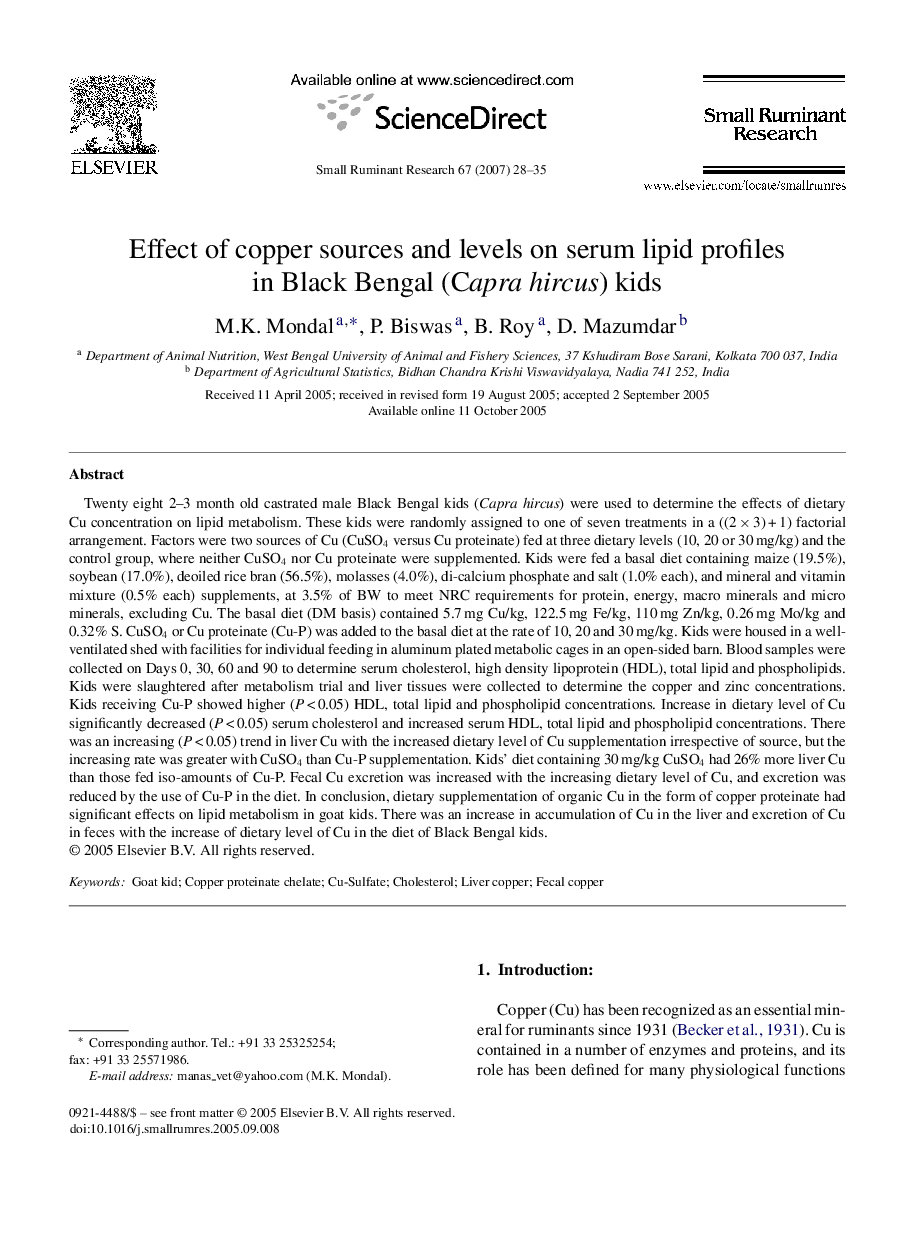| Article ID | Journal | Published Year | Pages | File Type |
|---|---|---|---|---|
| 2458486 | Small Ruminant Research | 2007 | 8 Pages |
Twenty eight 2–3 month old castrated male Black Bengal kids (Capra hircus) were used to determine the effects of dietary Cu concentration on lipid metabolism. These kids were randomly assigned to one of seven treatments in a ((2 × 3) + 1) factorial arrangement. Factors were two sources of Cu (CuSO4 versus Cu proteinate) fed at three dietary levels (10, 20 or 30 mg/kg) and the control group, where neither CuSO4 nor Cu proteinate were supplemented. Kids were fed a basal diet containing maize (19.5%), soybean (17.0%), deoiled rice bran (56.5%), molasses (4.0%), di-calcium phosphate and salt (1.0% each), and mineral and vitamin mixture (0.5% each) supplements, at 3.5% of BW to meet NRC requirements for protein, energy, macro minerals and micro minerals, excluding Cu. The basal diet (DM basis) contained 5.7 mg Cu/kg, 122.5 mg Fe/kg, 110 mg Zn/kg, 0.26 mg Mo/kg and 0.32% S. CuSO4 or Cu proteinate (Cu-P) was added to the basal diet at the rate of 10, 20 and 30 mg/kg. Kids were housed in a well-ventilated shed with facilities for individual feeding in aluminum plated metabolic cages in an open-sided barn. Blood samples were collected on Days 0, 30, 60 and 90 to determine serum cholesterol, high density lipoprotein (HDL), total lipid and phospholipids. Kids were slaughtered after metabolism trial and liver tissues were collected to determine the copper and zinc concentrations. Kids receiving Cu-P showed higher (P < 0.05) HDL, total lipid and phospholipid concentrations. Increase in dietary level of Cu significantly decreased (P < 0.05) serum cholesterol and increased serum HDL, total lipid and phospholipid concentrations. There was an increasing (P < 0.05) trend in liver Cu with the increased dietary level of Cu supplementation irrespective of source, but the increasing rate was greater with CuSO4 than Cu-P supplementation. Kids’ diet containing 30 mg/kg CuSO4 had 26% more liver Cu than those fed iso-amounts of Cu-P. Fecal Cu excretion was increased with the increasing dietary level of Cu, and excretion was reduced by the use of Cu-P in the diet. In conclusion, dietary supplementation of organic Cu in the form of copper proteinate had significant effects on lipid metabolism in goat kids. There was an increase in accumulation of Cu in the liver and excretion of Cu in feces with the increase of dietary level of Cu in the diet of Black Bengal kids.
